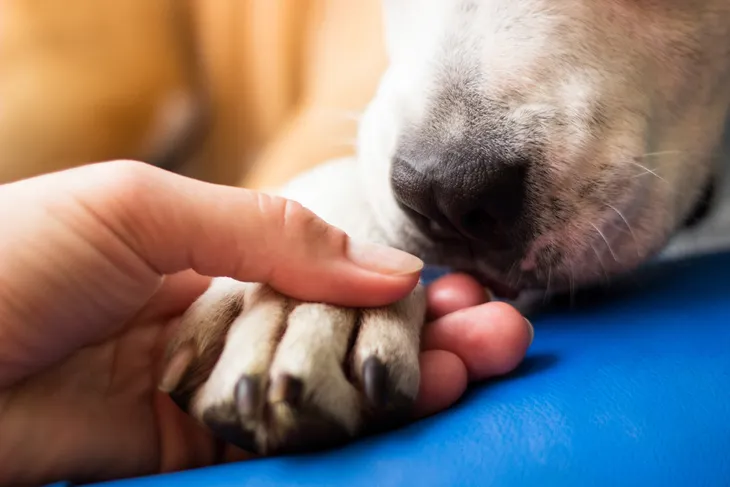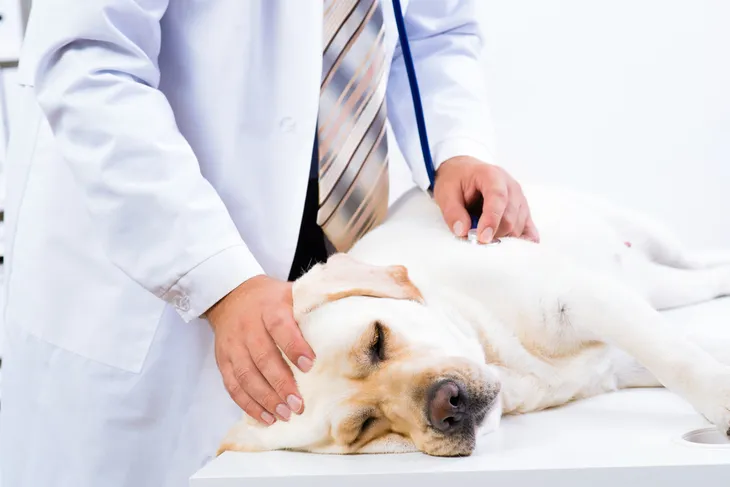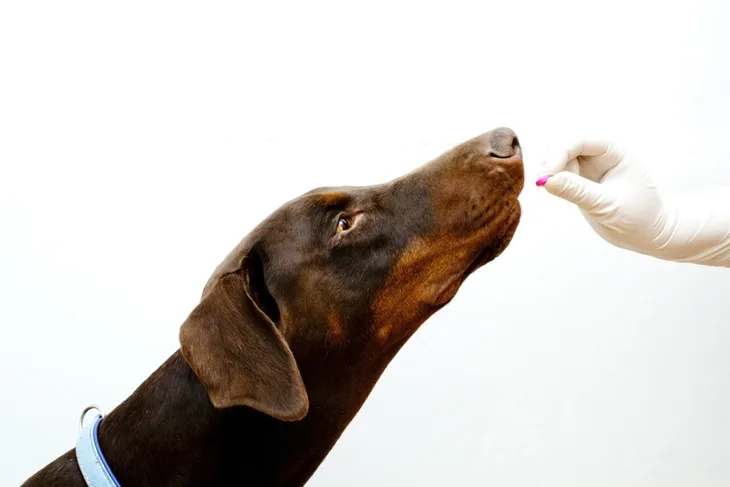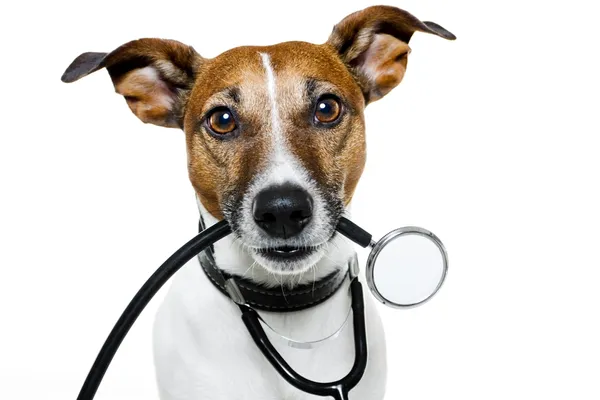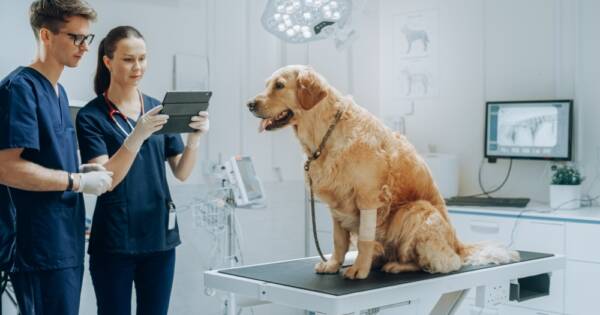Canine brucellosis is a contagious bacterial infection that affects a dog’s reproductive organs, or impedes its ability to reproduce. The disease is spread through direct contact with bodily fluids that contain the infectious bacteria. This group of sources primarily includes reproductive fluids, but saliva and urine can both contain smaller amounts of disease-causing germs. As such, they can also be the source of brucellosis infection. Sexual contact and inhalation of contaminated bodily fluids are the two main ways in which brucellosis spreads among dogs.
Symptoms of Brucellosis in Dogs
Brucellosis may be asymptomatic, or symptoms may not appear until your dog attempts to reproduce. When symptoms are present, they often include one or more of the following (note: treatment options are listed after the 8 symptoms below):
Symptom: Loss of Energy
Whatever the source, bacterial infections tend to have a noticeable and negative impact on a dog’s energy levels. After it firsts contracts the infection, your dog may experience a prolonged period of lethargy, or loss of energy. This symptom is non-specific and therefore difficult to associate specifically with brucellosis, and it is best considered an indicator that any number of health issues might be affecting your pet.
Symptom: Swollen Lymph Nodes
The lymph nodes are glands that produce biochemical substances that play a very important role in the immune system. Bacterial and viral infections often result in a swelling of the lymph nodes, and this swelling will be detectable if you know where (and how) to check for it.
If your dog has enlarged lymph nodes, you will likely notice swelling in one or more of the following places: directly beneath the jaw, around the shoulder, in one or more legs, near the leg joint, or in your dog’s groin area. Probe gently, as affected areas can be tender to the touch.
Symptom: Back Pain
Your dog may also develop back pain as a side effect of brucellosis infection, as the bacteria associated with the disease can alter the configuration of spinal bones. However, dogs are hard-wired not to show pain, since wounded animals are easy prey in the wild. As such, you may need to look closely for back pain symptoms.
They can include a seeming unwillingness to jump, weakness affecting the rear legs, anxious behavior, and reduced appetite. In some cases, your pet may yelp in pain…but, of course, this symptom is easy to spot.
Symptom: Swollen Testicles
Brucellosis infects sexually intact adult dogs. Shortly after acquiring the infection, male dogs often develop enlarged, swollen testicles. Swelling may affect only one testicle, or both. It may also be accompanied by swelling or enlargement of the scrotum, and your pet may also develop a skin condition known as dermatitis on its scrotum. If infection persists over a long period of time, the testicles may shrink or wither away.
You won’t notice it, but brucellosis also affects sperm production in male dogs. The sperm your dog ejaculates will be immature and of poor quality.
Symptom: Vaginal Discharges
Female dogs have their equivalent of these symptoms, and they typically take the form of vaginal discharges. This discharge will be persistent, and will usually be greenish-gray or brown in color. It will be easily to tell the difference between this discharge and normal vaginal excretions, such as urine.
This discharge contains a dense concentration of infectious bacteria, so if you have other sexually intact adult dogs in your household, it is very important that you prevent them from coming in contact with it.
Symptom: Walking Problems
Swelling of the testicles, discharges and discomfort in the vagina, and swollen lymph nodes can all impede your dog’s ability to walk properly. If your dog exhibits one or more of the previously listed symptoms and they are accompanied by changes in the way your pet walks, brucellosis may be suspected.
Particular changes to look for include a noticeably slower walking pace, a pet that appears to favor one or more legs, or apparent problems with range of leg motion.
Symptom: Infertility
Infected male dogs have very low sperm quality, and the vaginal discharges produced by infected female dogs are associated with spontaneous abortions triggered by the presence of the disease. Thus, in both cases, infertility is a likely result. Because brucellosis can be asymptomatic, reproductive difficulties are sometimes the only clear sign that something is wrong.
If your otherwise healthy, sexually intact adult dog is actively trying to reproduce and cannot, it is a good idea to consult your vet to find out why.
Symptom: Frail Puppies
If conception does occur and your dog manages to carry its puppies to full term, they may be born in a weakened and frail state. In many cases, puppies fathered or mothered by a dog with an active brucellosis infection will not live long, or will suffer from health problems if they do survive.
Fortunately, brucellosis is a relatively rare condition in developed countries. Most outbreaks are confined to kennels, though some also occur in breeding facilities.
Treatments for Brucellosis in Dogs
If your dog has symptoms of brucellosis, proceed with caution. It is possible for a dog to transmit the disease to a human. Avoid direct contact with any of your dog’s bodily fluids or secretions.
Treatment Option: Get an Accurate Diagnosis
The first step in treating brucellosis is to get an accurate diagnosis. Brucellosis is not always easy to spot and diagnose, and your dog may need to undergo an extensive series of tests to determine the cause of any symptoms that may be present.
Testing options include X-rays of the spine, to see if any bone changes have taken place. Your vet may also order bacterial cultures, organ tests, antibody tests, and blood cell counts to rule out other possible causes of symptoms, such as anemia.
Treatment Option: Spaying or Neutering
If your sexually intact adult dog contracts brucellosis, your vet will likely recommend that you have your pet spayed or neutered. This intervention will not actually treat the underlying infection, but it will prevent your pet from passing the disease on to other animals.
Spaying and neutering is also the most effective preventative measure against brucellosis that you can take. Veterinarians highly recommend that pets be spayed or neutered to help stop the spread of disease, and as a means of ensuring the pet population remains controlled.
Treatment Option: Antibiotics
Brucellosis infections often require a combination of antibiotic treatments. These medications will target and attack the bacteria that cause the infection, but in many cases, they will not permanently eliminate all traces of the bacteria from your dog’s body. Rather, they will be effective enough to get your pet’s symptoms under control and help speed up its recovery from the infection.
Efforts to develop a vaccine against brucellosis have not been effective, so post-infection antibiotic treatment remains the only medicinal intervention available.
Treatment Option: Follow-up Care
While antibiotics can help keep your dog’s bacterial infection under control, they often fail to completely eliminate all the disease-causing germs from your pet’s system. As such, your vet will likely tell you that your dog should be considered permanently infected. It will remain as such even with spaying or neutering.
Thus, your dog may discharge contagious bacteria at any future point in its life cycle. To reduce the risk of spreading the infection to other dogs, you should return to your vet for periodic follow-up care. It is possible to perform tests to see how much active bacteria still remains in your dog’s system, which in turn helps you assess the level of risk it poses to other animals.




